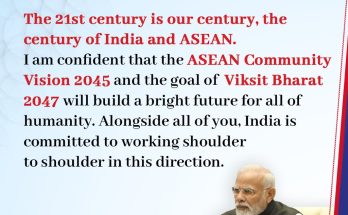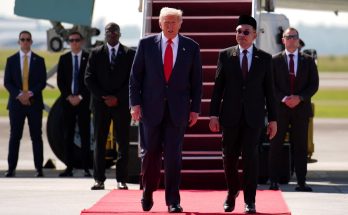 Complaints against the UPA government’s discriminating attitude and step-motherly treatment of the states of the Indian Union, particularly of those where the non-Congress parties ruled, and the promise to usher in cooperative federalism if voted to power was one of the main planks of the Bharatiya Janata Party (BJP) and its prime ministerial candidate Narendra Modi’s electoral agenda in the 2014 Lok Sabha polls.
Complaints against the UPA government’s discriminating attitude and step-motherly treatment of the states of the Indian Union, particularly of those where the non-Congress parties ruled, and the promise to usher in cooperative federalism if voted to power was one of the main planks of the Bharatiya Janata Party (BJP) and its prime ministerial candidate Narendra Modi’s electoral agenda in the 2014 Lok Sabha polls.
Now that the BJP-led National Democratic Alliance (NDA) government has been in command of India for over seven months, it is time to have a look at the progress that the country has made in this direction.
The prime minister announced the dismantling of the 64-year-old Planning Commission in his first Independence Day address from the historic Red Fort. “We will very soon set up a new institution in place of the Planning Commission….. the internal situation of the country has changed, global environment has changed…We need an institution of creative thinking and for optimum utilisation of youth capability”, Modi had said.
Barely months after the announcement, the prime minister has delivered on his promise as the Planning Commission has been replaced with a new think tank-like body, NITI Ayog, which is expected to set the policy agenda for the government. The new body’s Governing Council will comprise state chief mnisters and Lt. Governors of Union Territories
The Planning Commission was set up in 1950 in accordance with the Directive Principles of the Constitution. Jawaharlal Nehru, India’s first Prime Minister, had established the commission with the explicit objective of promoting the standard of living of the people by efficiently exploiting the resources of the county, increasing production and offering opportunities to all for employment in the service of the community. It was being increasingly felt that the Commission had outlived its utility particularly after the economic reforms of 1990s. The Planning Commission, in Modi’s eyes, was serving no purpose as it had become a tool of the central government through which the ruling party in New Delhi exercised control of flow of funds to states and union territories. This view was shared by many non-Congress leaders and chief ministers.
Against this backdrop, the prime minister had roped in the states to to create a new institution to replace the Planning Commission. The prime minister had convened a meeting of the chief minister in the first week of December for consultations. Mr Modi invoked the spirit of “cooperative federalism” and said that “Team India” is a combination of three teams-the prime minister and chief ministers; the Union council of ministers; and the bureaucracy at the centre and in sates.
Hopefully, the NITI Ayog would be reflective of the needs, aspirations and desires of states and union territories, but till the time the new institution starts functioning, these would remain promises only.
In yet another act, the Modi government had taken a definite step towards promoting fiscal federalism in its union budget. Finance Minister Arun Jaitley shifted huge outlays to states by transferring large chunk of central plan outlays, including the flagship UPA scheme-the Mahatma Gandhi National Rural Employment Guarantee Act (MGNREGA). By this budgetary step, state plans financed by the Centre have moved up from 26 per cent of the total plan expenditure to 59 per cent.
Resources equal to nearly 1.6 per cent of GDP have been shifted from the Centre to states. In 2013-14, central assistance to state plans was 1 per cent of the GDP while in the 2014-15 financial year it has gone up to 2.6 per cent.
More rights for the states have been on the BJP’s electoral and political agenda for over 25 years. The BJP’s top leadership, in close consultation with their ideological mentor-the Rashtriya Swyamsevak Sangh (RSS), decided to reverse its earlier stand of a “strong centre”. The RSS and BJP’s earlier avatar, Bharatiya Jan Sangh, had stressed on the need of a strong centre which in their assessment alone could preserve the unity of the country and keep fissiparous and anti-national forces at bay.
Pursuing its goal of coming to power in New Delhi, the BJP came to the conclusion that it on its own strength can never come to power in New Delhi as its presence was limited to the Hindi-speaking states of north India. In order to come to power, the BJP needed support of regional parties many of whom were in power in different states
The BJP moved to forge electoral alliances with like-minded parties and the party began to propagate the concept of coalition government at the centre. In the process, the party accused the Congress of “perverting” the spirit of federalism and talked of more rights for states.
The first BJP-led government was formed in 1996 and then it remained in power from 1998 to 2004 and did precious little constitutionally to give more powers to states.
During ten years of remaining in the opposition, the BJP’s state leaders like the then Gujarat Chief Minister Narendra Modi not only talked of more powers for states, but accused the Congress-led UPA government of Prime Minister Manmohan Singh of discriminating states in the allocation of funds.
As far back as in 2010, the BJP adopted a resolution at its national executive meeting in Patna that it was committed federalism and asked the Congress-led UPA to “desist from subversive and underhand activities against elected non-Congress governments in the states”.
The BJP and prime ministerial candidate Modi went hammer and tong against the Centre as it was convinced that if they had to replace the UPA, then they would need the support of regional parties.
But, the BJP, against its assessment, expectations and hopes, got an absolute majority in the 2014 Lok Sabha polls which seems to have made a nuanced change in the prime minister’s and party’s stand on the issue.
With the BJP coming to power in more states, the goal of pushing for cooperative federalism is within reach as the prime minister could personally monitor the progress. More powers for states also suits Modi’s developmental agenda as states would be able to accelerate economic and industrial growth which would bring credit to the Modi government as economic developments in states would boost GDP growth.
The 14th Finance Commission has submitted its report and it is certain that the Commission would recommend more resources to states. The Modi’s government is already working overtime to usher in goods and services tax (GST) regime and it is likely to be a reality by 2016. The introduction of GST would bring more financial resources as the Centre has gone more than half way to allay apprehensions of the states.
In a way, giving more financial and political powers to states suits the prime minister’s political agenda as it would also promote competition among states. States would seek to create favourable climate for investments by improving administrative efficiency and by pushing for a pro-people administration.
The next few months are going to reveal the government’s strategy for the implementation of its federalism project. It is a work in progress and appears to be going in the right direction, but the next Union Budget and the 14th Finance Commission report would offer concrete evidence of the prime minister’s commitment.
(Dr Satish Misra is a senior journalist and a Senior Fellow at the Observer Research Foundation.)
Author Profile
- India Writes Network (www.indiawrites.org) is an emerging think tank and a media-publishing company focused on international affairs & the India Story. Centre for Global India Insights is the research arm of India Writes Network. To subscribe to India and the World, write to editor@indiawrites.org. A venture of TGII Media Private Limited, a leading media, publishing and consultancy company, IWN has carved a niche for balanced and exhaustive reporting and analysis of international affairs. Eminent personalities, politicians, diplomats, authors, strategy gurus and news-makers have contributed to India Writes Network, as also “India and the World,” a magazine focused on global affairs.
Latest entries
 DiplomacyOctober 4, 2025UNGA Resolution 2758 Must Not Be Distorted, One-China Principle Brooks No Challenge
DiplomacyOctober 4, 2025UNGA Resolution 2758 Must Not Be Distorted, One-China Principle Brooks No Challenge India and the WorldJuly 26, 2025MPs, diplomats laud Operation Sindoor, call for national unity to combat Pakistan-sponsored terror
India and the WorldJuly 26, 2025MPs, diplomats laud Operation Sindoor, call for national unity to combat Pakistan-sponsored terror India and the WorldJuly 25, 2025When Fire Ends, Diplomacy Begins
India and the WorldJuly 25, 2025When Fire Ends, Diplomacy Begins India and the WorldJuly 16, 2025Operation Sindoor and its Aftermath: India’s Successful Diplomatic Outreach
India and the WorldJuly 16, 2025Operation Sindoor and its Aftermath: India’s Successful Diplomatic Outreach







